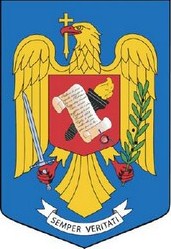
Transylvania is a historical and cultural region in Central Europe, encompassing central Romania. To the east and south its natural border is the Carpathian Mountains and to the west the Apuseni Mountains. Broader definitions of Transylvania also include the western and northwestern Romanian regions of Crișana and Maramureș, and occasionally Banat. Historical Transylvania also includes small parts of neighbouring Western Moldavia and even a small part of south-western neighbouring Bukovina to its north east.

Moldavia is a historical region and former principality in Central and Eastern Europe, corresponding to the territory between the Eastern Carpathians and the Dniester River. An initially independent and later autonomous state, it existed from the 14th century to 1859, when it united with Wallachia as the basis of the modern Romanian state; at various times, Moldavia included the regions of Bessarabia, all of Bukovina and Hertsa. The region of Pokuttya was also part of it for a period of time.

Wallachia or Walachia is a historical and geographical region of modern-day Romania. It is situated north of the Lower Danube and south of the Southern Carpathians. Wallachia was traditionally divided into two sections, Muntenia and Oltenia. Dobruja could sometimes be considered a third section due to its proximity and brief rule over it. Wallachia as a whole is sometimes referred to as Muntenia through identification with the larger of the two traditional sections.
The 41 județe and the municipality of Bucharest comprise the official administrative divisions of Romania. They also represent the European Union' s NUTS-3 geocode statistical subdivision scheme of Romania.

Bukovina is a historical region in Eastern Europe. The region is located on the northern slopes of the central Eastern Carpathians and the adjoining plains, today divided between Romania and Ukraine.

The term Greater Romania usually refers to the borders of the Kingdom of Romania in the interwar period, achieved after the Great Union. It also refers to a pan-nationalist idea.

The Duchy of Bukovina was a constituent land of the Austrian Empire from 1849 and a Cisleithanian crown land of Austria-Hungary from 1867 until 1918.

Romania's administration is relatively centralized and administrative subdivisions are therefore fairly simplified.
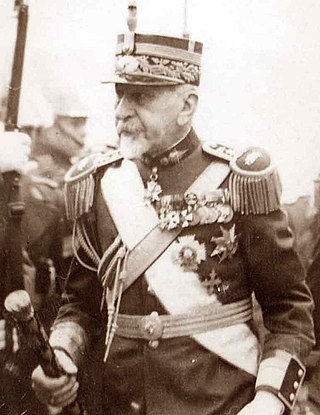
Constantin Prezan was a Romanian general during World War I. In 1930 he was given the honorary title of Marshal of Romania, as a recognition of his merits during his command of the Northern Army and of the General Staff.
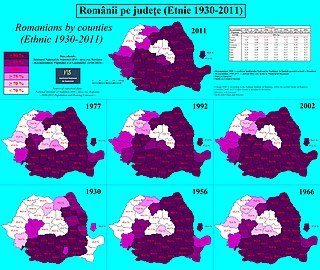
Romanianization is the series of policies aimed toward ethnic assimilation implemented by the Romanian authorities during the 20th and 21st century. The most noteworthy policies were those aimed at the Hungarian minority in Romania, Jews and as well the Ukrainian minority in Bukovina and Bessarabia.
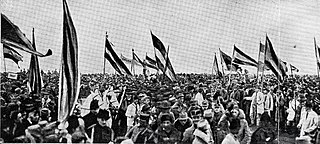
Great Union Day is a national holiday in Romania, celebrated on 1 December, marking the unification of Transylvania, Bassarabia, and Bukovina with the Romanian Kingdom in 1918, something that is known as the Great Union. This holiday was declared after the Romanian Revolution and commemorates the Great National Assembly of the delegates of ethnic Romanians held in Alba Iulia, who declared the Union of Transylvania with Romania.

The Romanian government is the armiger in Romania. It exercises this right under the mandatory advice of the National Committee of Heraldry, Genealogy and Sigillography. The committee is subordinate to the Romanian Academy. All the coats of arms of Romanian institutions must be approved by this committee with two exceptions. The Romanian military is subject to the Ministry of National Defense Heraldric Committee, and Romanian law enforcement institutions are subject to the Ministry of Administration and Interior Heraldric Committee. Both of these committees may share members with the National Committee of Heraldry, Genealogy and Sigillography.

Romanian Catholics, like Catholics elsewhere, are members of the Catholic Church under the spiritual leadership of the Pope and Curia in Rome. The administration for the local Latin Church is centered in Bucharest, and comprises two archdioceses and four other dioceses. It is the second largest Romanian denomination after the Romanian Orthodox Church, and one of the 18 state-recognized religions. As of 2021, 5.2% of Romanians identified as Catholic. The 2012 census indicated that there were 741,276 Romanian citizens adhering to the Latin Church. Of these, the largest groups were Hungarians, Romanians, Germans and Slovaks.

Ioan Constantin Filitti was a Romanian historian, diplomat and conservative theorist, best remembered for his contribution to social history, legal history, genealogy and heraldry. A member of the Conservative Party and an assistant of its senior leader Titu Maiorescu, he had aristocratic (boyar) origins and an elitist perspective. Among his diverse contributions, several focus on 19th-century modernization under the Regulamentul Organic regime, during which Romania was ruled upon by the Russian Empire. As a historian, Filitti is noted for his perfectionism, and for constantly revising his own works.
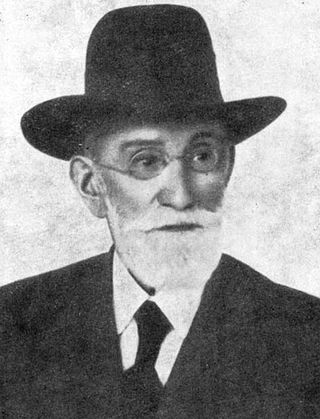
Constantin C. Moisil was an Austro-Hungarian-born Romanian archivist, historian, numismatist and schoolteacher.

Ștefan Cicio Pop was a Romanian politician.

Sever Ioan Zotta was a Romanian archivist, genealogist, historian and publicist, corresponding member of the Romanian Academy.

The Bukovina Governorate was an administrative unit of Romania during World War II.

Eugen Todoran Central University Library is an academic library in Timișoara. Founded in 1944, it serves the West University of Timișoara (UVT). The library is subordinated and funded by the Ministry of National Education. BCUT provides access to over one million volumes, books, journals and other documents. The library has a headquarters, consisting of two buildings, branch libraries located in the UVT faculty buildings, as well as the Austrian and British libraries.
The 1941 Romanian census was conducted on 6 April 1941 in all territories still remaining in the Kingdom of Romania, following the loss of land to Hungary, Bulgaria, and the Soviet Union. After the Axis invasion of the Soviet Union, Romania retook control of its lands that the Soviet Union had invaded, in which it conducted the census separately in the autumn of 1941. Later, Romania also annexed the Transnistria Governorate, finishing the census by conducting it there in December 1941.


